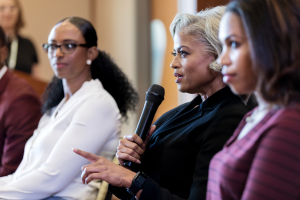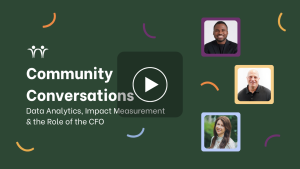During our recent Community Conversation, the discussion focused on the role of the COO and how to know when the timing is right for making this hire.
We welcomed Tandem Network Members and fractional COOs Amelia Waters and Suzi Mikaelian, along with our Tandem HQ’s fractional COO, Lisa Ranken, to dig into the operational piece of a business, and how a COO (or “wise guide” as Renee Mitchell put it, though some of us thought she said “wise guy” 😆) can ground a CEO’s vision, bringing structure, pragmatism, and eventually action.
Their conversation was thick with insights (each of which could fill its own hour-long discussion!). Here are three:
Importance of Trust and Relationship-Building: “At the end of the day you’re hiring a partner who will stick with you when things aren’t so shiny, and help find solutions to challenges as they come up,” says Lisa. “That relationship is so critical to the success of a business.” When bringing in a COO, there must be a foundation of trust built with the CEO first; this partnership needs firm roots for when challenging times emerge and delivering unpopular opinions is necessary.
Timing for Hiring a COO: COOs are often called in when a business is facing a host of complex issues that need immediate attention, often as a result of growth. “As businesses grow” says Suzi, “so does the complexity of their product needs and channels of distribution. This leads to capacity issues, skill set gaps, efficiency bottlenecks, and other challenges like high turnover and siloed leadership, disrupting the organizational rhythm.”
Ideally, it’s better to be “a bit of a futurist, and keep the vision alive” by planning ahead and bringing on a COO before the point of urgency. This approach will allow businesses to avoid the costly challenges described above, and properly position them for entering the next stage of growth.
Fractional COO vs. Full-Time Employee: Hiring a fractional COO offers benefits including reduced risk and the opportunity to access specialized expertise for specific projects without committing to a full-time position. They’re also able to hold more of an objective “outsider’s” perspective, integrating what they’re learning from their full portfolio and developing strategy without the concern of “working themselves out of a job”.
“When I first come on as a fractional COO, one of the things I try to make clear is I’m here with a partial outsider view,” says Amelia, “My stake is not in a long term job – and holding on to this job – it’s not a thing in this relationship. So we can be much more honest with each other… I think we as fractional professionals have a greater latitude to tell the truth.”
While these are the most top-of-mind takeaways; there was so much depth to the discussion that a brief recap can’t do it justice. To learn more about the role of the COO, watch the full event recording here.
Our next Community Conversation is Wednesday, Apr 10, and will take on the topic of data analytics and the role of the CFO, particularly as it relates to impact measurement. We’re still working out the details but go ahead and register your spot and we’ll send more specifics soon.
Lean into your growth edge
Edgerunners operate at the forefront of change and innovation, nurturing ecosystems that regenerate in collaboration with the people and forces around them.
Get Edgerunners delivered to your inbox each month.
Also on our blog














